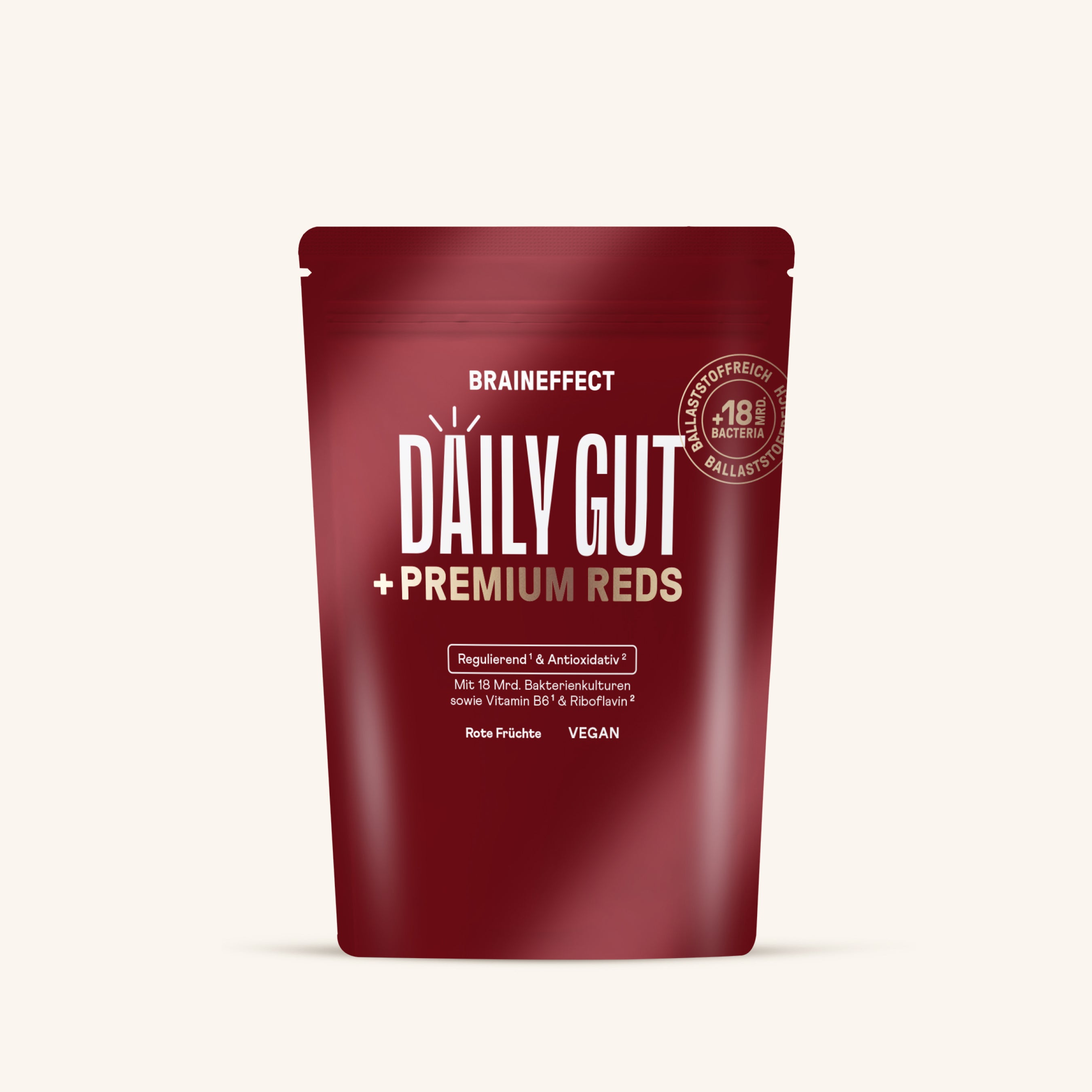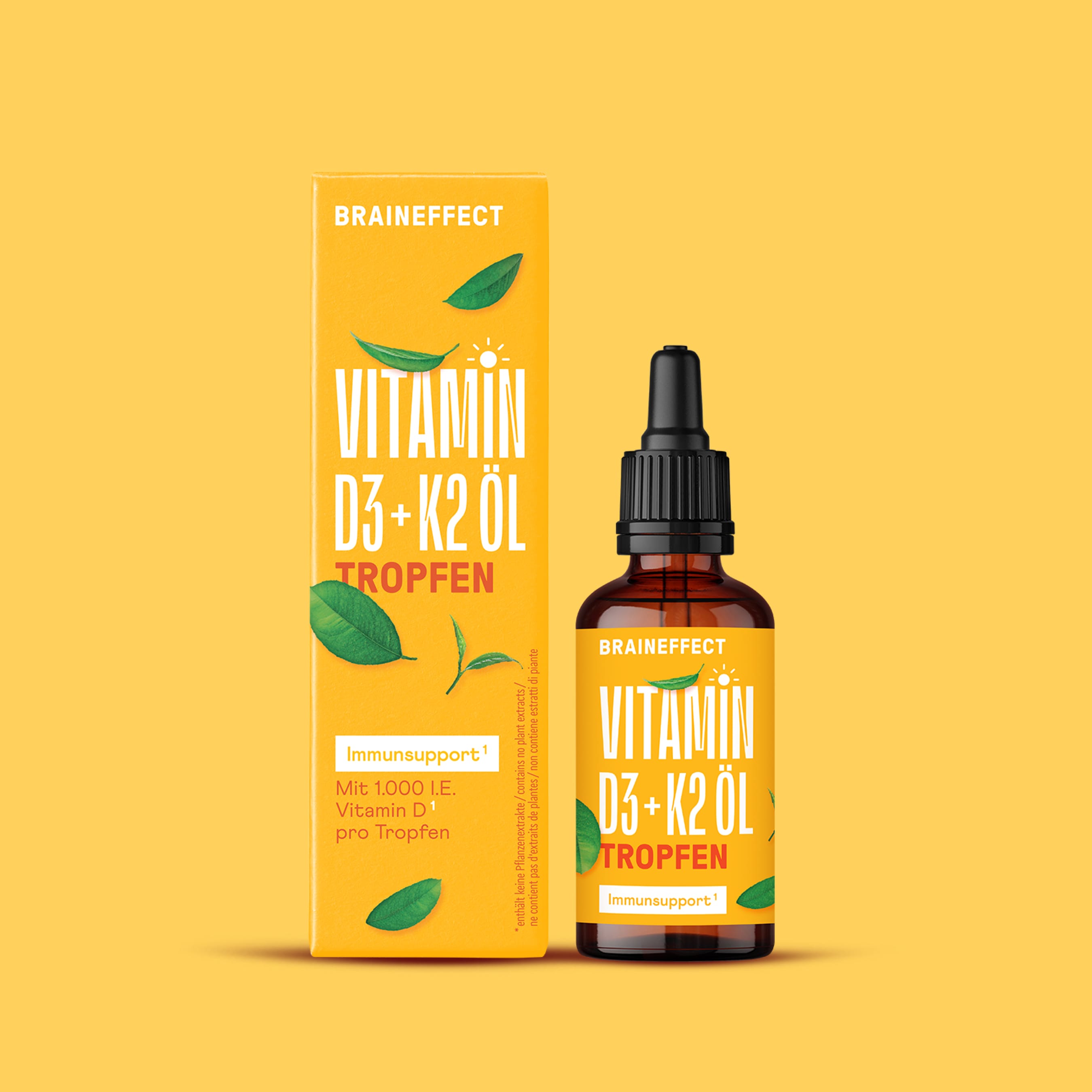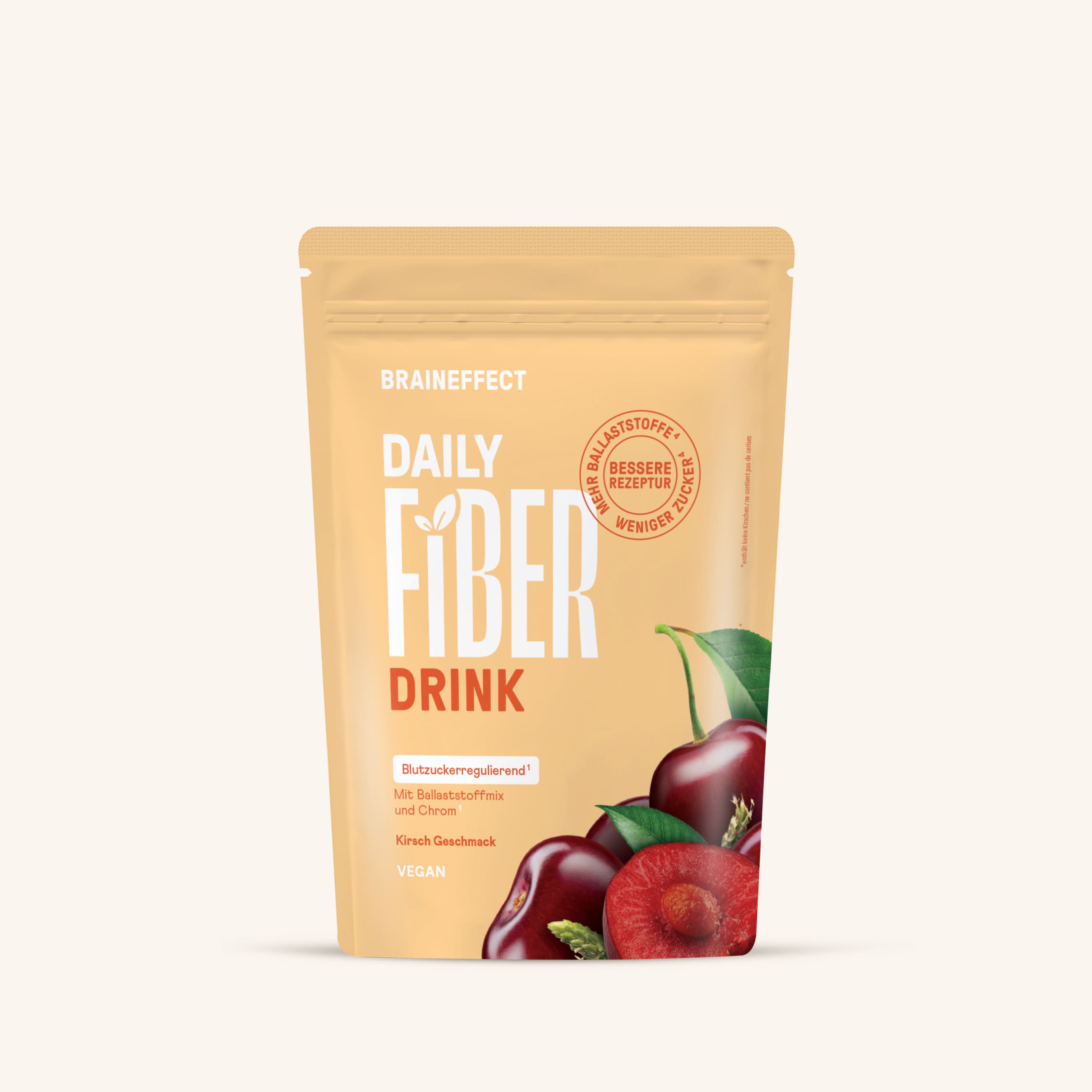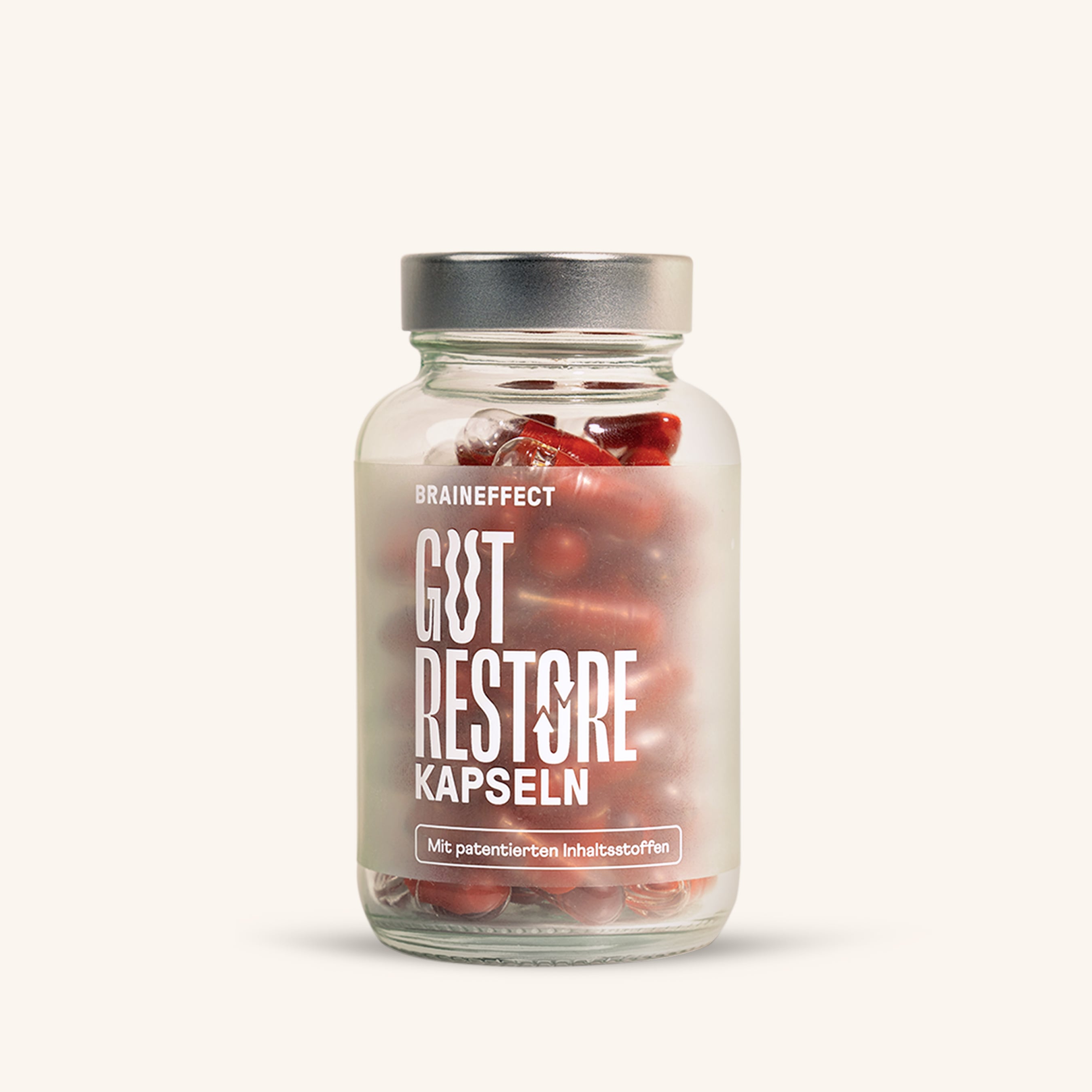In winter, vitamin D is often in short supply because your body produces far less of the sunshine vitamin during the dark season than in summer.
To replenish your vitamin D reserves and maintain them at a consistent level, it's worth calculating your needs with a vitamin D test. Our online vitamin D calculator will give you an initial estimate!
Table of contents
1. Why should I test my vitamin D levels?
Vitamin D is one of the most important vitamins, with the unique feature that it is produced by your body itself . However, it requires sunlight on your skin to stimulate its synthesis . In summer, this is usually not a problem. You spend a lot of time outdoors and thus absorb the sun's rays . However, in winter, many people's vitamin D levels drop due to a lack of UVB light.
In Germany , as many as 80% of the population is vitamin D deficient in winter. However, you need vitamin D year-round for your calcium balance , healthy bones and teeth , normal muscle function, your immune system , and cell division. Your well-being benefits.
Even more hacks for more energy & well-being
Your vitamin D needs should be adequately covered both summer and winter. Of course, this is only possible if you know your vitamin D levels and your daily requirements. To calculate your vitamin D levels , you can use a free vitamin D test or vitamin D calculator .
You enter your current vitamin D blood levels into this calculator. The results of the vitamin D test will then tell you your vitamin D needs and how much you need to supplement . The test will show you a starting dose that you should take over a certain period of time to bring your vitamin D levels back to the correct level.
The vitamin D test also tells you how high your maintenance dose is to keep your levels within the ideal range. If your vitamin D level is already too high, the results will indicate how long you should pause your vitamin D intake. Too much vitamin D in the long term can have undesirable consequences.
BRAINEFFECT HACK : Vitamin D intake is usually quite low in summer, but you still need to take care of your health in winter. Determine your vitamin D levels with a vitamin D test to optimize your levels.
2. The different vitamin D units
When calculating your vitamin D level with a vitamin D test, you should pay attention to the unit . Vitamin D levels are sometimes expressed in nmol/L (nanomoles per liter) and sometimes in ng/ml (nanograms per milliliter). However, these two units are not the same! The nmol/L value is 2.5 times higher than the ng/ml value. If you don't pay close attention to the information, you'll get inaccurate results.
Most vitamin D calculators use ng/ml as the unit. To convert the nmol/L value to ng/ml, you'll need to divide by 2.5 before entering the data into the calculator. Some vitamin D calculators even offer a conversion option.
When calculating your vitamin D3 dosage, you will see the results in a different unit: The daily dose of vitamin D is given in IU (international unit) or in µg . 1µg corresponds to 40 IU .

3. Vitamin D test results: What is normal?
On average, an adult needs about 30 to 60 ng/ml . In the summer , you can reach this level after just 15 to 30 minutes of being outdoors wearing a T-shirt and shorts . In the winter , however, it becomes difficult to get your daily dose of vitamin D. To determine your blood vitamin D level, you should have a vitamin D test performed by your doctor. Based on your blood values, your doctor can tell you how well or poorly you are supplied with vitamin D:
- If the level is less than 20 ng/ml, there is a vitamin D deficiency
- at 20 to 30 ng/ml there is an undersupply
- 35 to 60 ng/ml are considered normal values
- 60 to 90 ng/ml are already considered high values
- at 90 to 150 ng/ml there is an oversupply
- and at values above 150 ng/ml there is a risk of vitamin D poisoning
Vitamin D blood levels are the basis for calculating your optimal vitamin D dosage. The results of the vitamin D test will tell you how many IU of vitamin D you need to consume to reach your ideal level. Especially in winter, adequate vitamin D levels are essential to support your immune system and prevent colds from catching. Always take care of your health!
Researchers at the Rijnstate Hospital in Arnhem developed a general rule for calculating vitamin D requirements [1]: 40 to 60 IU of vitamin D per kg of body weight per day. A vitamin D level in the upper normal range, i.e., around 60 ng/ml, is desirable.
Everything you need to know about vitamin D
BRAINEFFECT HACK : A vitamin D test will tell you your current vitamin D level. If you're deficient, you can use a vitamin D calculator to calculate your daily requirement. Adequate vitamin D levels are essential for your body year-round.
4. Use the vitamin D calculator correctly
Once you have the results of your vitamin D blood test, you can calculate everything else yourself. There are various free vitamin D calculators available online where you simply enter this data:
- current weight
- your current vitamin D blood levels, usually in ng/ml
- Your desired vitamin D level. This is between 40 and 80 ng/ml; 60 ng/ml represents a target average.
- Desired time period in which you want to replenish your vitamin D stores. The time period shouldn't be too short.
The result will then show you your daily vitamin D intake in IU. The recovery value and the recommended daily dose to reach your goal can be used as a guide to replenish your stores. The maintenance dose after reaching your target value shows you the dosage you can then reduce to maintain your vitamin D levels.

5. What is the optimal vitamin D level?
It would be so simple if there were a general vitamin D requirement that applied to everyone. But there isn't, because vitamin D requirements depend on many individual factors, such as daily time spent outdoors or general lifestyle.
In Germany, the DGE recommends a daily dose of 800 IU . Until 2012 , this figure was only 200 IU , but was suddenly quadrupled. However, even this new figure is considered far too low based on current research.
The outdated recommendations are based on inaccurate statistics, as researchers at Creighton University in Omaha clearly confirmed in 2011 [2]. In 2014, Paul J. Veugelers and John Paul Ekwaru again drew attention to the far too low recommendations, which resulted from a calculation error and thus leave a large part of the population in a state of deficiency [3].
In fact, US scientists now cite a value almost ten times higher, at 7,000 IU per day for adults. Reinhold Vieth of the University of Toronto even considers 10,000 IU to be a safe dose, which should even be aimed for.
As early as 1999, he criticized the US recommended daily dose of 600 IU as being far too low [4]. He underscored his findings again in 2012 by recommending 10,000 IU of vitamin D as a guideline for people with little exposure to sunlight [5].
What constitutes an optimal vitamin D intake is not yet clearly established. What is certain, however, is that the IOM's recommendations of 600 IU in the USA and the DGE's recommendations of 800 IU in Germany have been proven to be far too low for decades. While they may just prevent a deficiency, they are far from optimal.
The general recommendations for vitamin D requirements are far too low. Scientists recommend a much higher daily dose of vitamin D3. It's recommended that you gradually work your way up to the optimal amount of vitamin D.
BRAINEFFECT HACK : To quickly and easily increase your vitamin D levels, our BRAINEFFECT VITAMIN D3+OIL helps. Made in Germany with 1000 IU per drop.
{{widget type="egproducts/list_productbyid2" product_id="599" img_width="250" img_height="335" template="elegento/products/productteaser_by_id_2.phtml"}}
6. How can I increase my vitamin D levels?
It's actually not that difficult to increase your vitamin D levels. Once you know your status quo after a vitamin D test and have also calculated your vitamin D needs, you have the following options:
Going out into the sun
Sunlight is the solution to the vitamin D problem . Therefore, make the most of every ray of sunshine and let it shine on your skin. This is, of course, very easy in the summer. However, in winter, the solar radiation above the 51st parallel is no longer sufficient to boost your vitamin D production. It's best to get enough vitamin D in the summer to continue to benefit from it in the winter.
Studies at Boston University have shown that direct contact with the sun's rays on the skin actually leads to vitamin D production. Even a pane of glass prevents the process from starting [6].
Vitamin D in food
While sunlight is still your main source of vitamin D, it's still worth including more vitamin D-rich foods in your diet, especially in winter. The simple rule applies: Animal products contain vitamin D3 , while plant products contain vitamin D2 , which is easily converted into D3 by the body. Foods containing vitamin D include:
- Fish (e.g. eel, herring, trout, salmon, oysters)
- Offal (e.g. liver)
- eggs
- Dairy products (e.g. Emmental, Gouda, butter)
- Mushrooms (e.g. morels, porcini mushrooms, chanterelles, mushrooms)
- Avocados
Dietary supplements
In winter, sunshine is in short supply and the unbalanced, one-sided diet that is common in everyday life often does not protect against a vitamin D deficiency, as food contains only small amounts of vitamin D - the only option left is to take vitamin D in through food supplements .
Researchers and doctors now agree that it makes sense in northern regions to bridge the dark season with supplements.
When purchasing, it's important to follow the dosage instructions . There are many different tablets and drops available on the market, but it's advisable to choose a product from a trusted manufacturer.
In addition to pure vitamin D supplements, there are also combination supplements with vitamin D3 and K2 , such as VITAMIN D3+ OIL . In summer, just one drop is sufficient for optimal intake; in winter, 2 to 6 drops are required.
Since vitamin D is fat-soluble, it's advisable to use an oil-based supplement. This ensures your body optimally absorbs the vitamin D it needs.
Other nutritional supplements for brain and memory
7. Vitamin D3 and Vitamin K2
If you've calculated your vitamin D3 dosage in the vitamin D test, you should definitely also consider your vitamin K intake. The combination of vitamin D3 and vitamin K2 can improve calcium utilization .
Vitamin D increases the synthesis of certain proteins, such as matrix GLA protein and osteocalcin, which depend on vitamin K. If you increase your vitamin D dose, you should also adjust your vitamin K intake accordingly. Too much vitamin D and too little vitamin K can otherwise lead to vitamin D toxicity, which in turn can lead to arteriosclerosis.
Vitamin K is found in almost all vegetables , so its absorption shouldn't be a problem with a balanced diet. A recommended ratio is approximately 25 µg of vitamin D to 50 µg of vitamin K2. Combination supplements are suitable for ensuring a long-term supply of both.
BRAINEFFECT HACK : Take a vitamin D test . Sunlight on your skin, vitamin D-rich foods, supplements, and sufficient vitamin K will help you get through the winter months well.
8. Conclusion
A vitamin D test is very useful for optimizing your performance. In this country, vitamin D deficiency is often present, especially during the winter months. However, since the sunshine vitamin is extremely important for your muscles and bones , you should keep your vitamin D levels at an optimal level .
A vitamin D test will tell you what dose you should take to replenish your stores and ensure you have a long-term, adequate supply .
This is the only way to maintain your performance over the long term . Always take one step at a time to become even better at what you love! We're happy to support you on this journey with our newsletter and provide you with valuable performance hacks.
To successfully achieve your goals, you need a solid foundation. A balanced and healthy diet, performance training, and physical strength are essential. Would you like to optimize yourself in these areas and receive tips from our coaches? Then start with our Performance Coach program for free.
Start Performance Coach now for free
9. Sources
[1] van Groningen L, Opdenoordt S, van Sorge A, Telting D, Giesen A, de Boer H. (2010). Rijnstate Hospital Arnhem, Arnhem, Netherlands. Eur J Endocrinol. Cholecalciferol loading dose guideline for vitamin D-deficient adults. [ https://www.ncbi.nlm.nih.gov/pubmed/20139241 ]
[2] Heaney RP, Holick MF. (2011). Creighton University, Omaha, USA. J Bone Miner Res. Why the IOM recommendations for vitamin D are deficient. [ https://www.ncbi.nlm.nih.gov/pubmed/21337617 ]
[3] Paul J. Veugelers, John Paul Ekwaru (2014). University of Alberta, Edmonton, Canada. Nutrients. A Statistical Error in the Estimation of the Recommended Dietary Allowance for Vitamin D [ https://www.ncbi.nlm.nih.gov/pmc/articles/PMC4210929/ ]
[4] Vieth R. (1999). University of Toronto, Toronto, Canada. At J Clin Nutr. Vitamin D supplementation, 25-hydroxyvitamin D concentrations, and safety. [ https://www.ncbi.nlm.nih.gov/pubmed/10232622 ]
[5] Vieth R. (2012). University of Toronto, Toronto, Canada. Scand J Clin Lab Invest Suppl. Implications for 25-hydroxyvitamin D testing of public health policies about the benefits and risks of vitamin D fortification and supplementation. [ https://www.ncbi.nlm.nih.gov/pubmed/22536776 ]
[6] Holick MF (1995). Boston University Medical Center, Boston, USA. At J Clin Nutr. Environmental factors that influence the cutaneous production of vitamin D. [ https://www.ncbi.nlm.nih.gov/pubmed/7879731 ]















